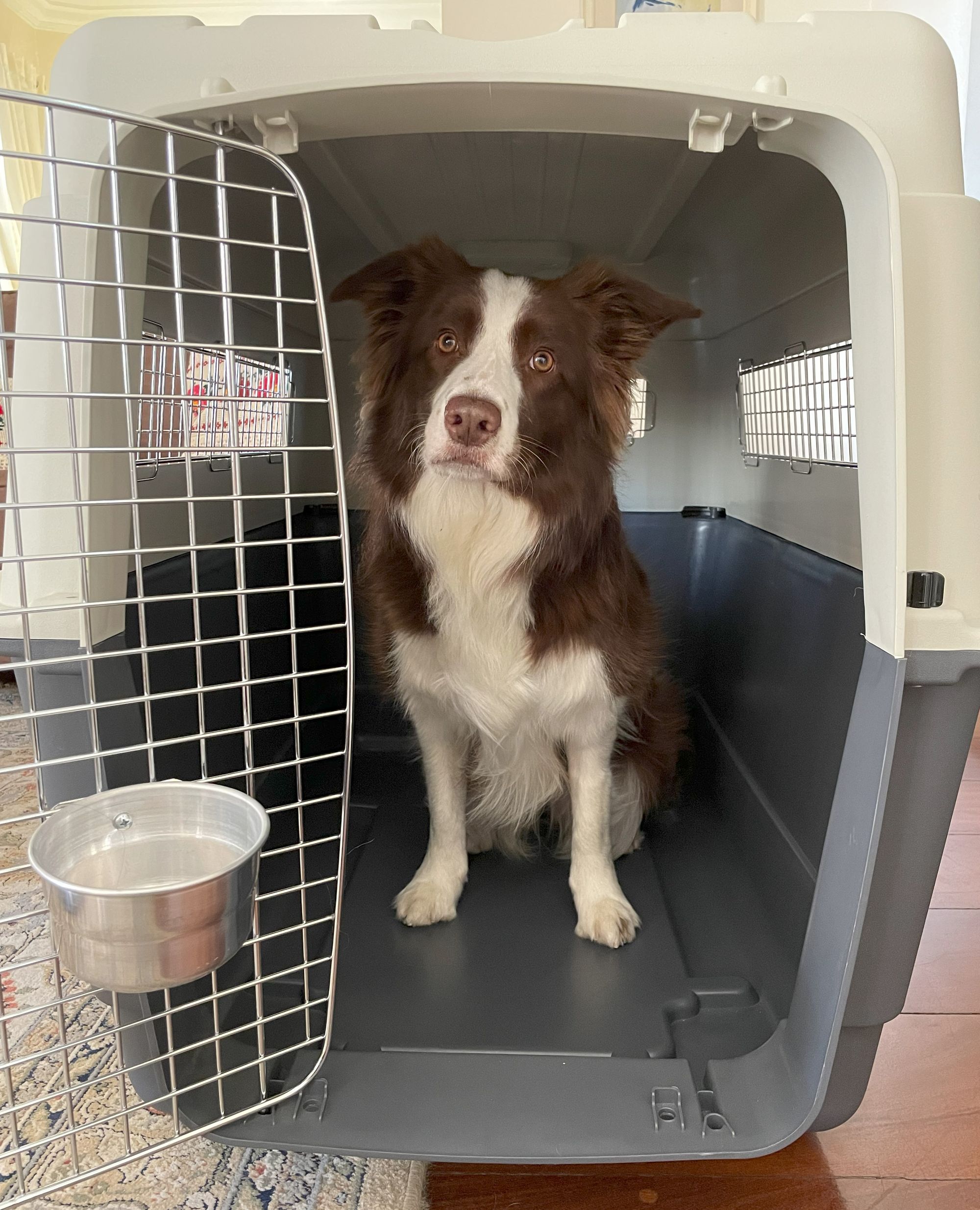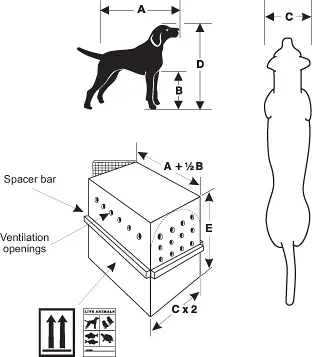Travelling by Plane with your Pet: BEFORE the Trip

After we decided to move to the UK, at the beginning of 2022, our biggest concern became Gaia's transportation. If moving and travelling are already so stressful for us humans, imagine what it's like for the animals, who have no idea what is going on.
In addition to the concern for our pets' physical and mental well-being, we are overwhelmed by several sanitary and air rules, which vary according to the place of departure and destination. That is why we decided to make a series of posts about the main points one should consider when travelling by plane with a pet.
To do this, we asked the help of Carolina Neves, a pet travel consultant, who helped us prepare for Gaia's trip. Carolina is a dog and cat behaviourist in Brazil, founder of Consultoria Pet and has been working for 18 years directly helping families to understand and communicate better with their pets.
In this first post, we address the main questions that arise before your pet's trip.

Training for the Journey
Every time someone contacts us saying they will be travelling with their pet by plane, the first tip we give them is to start training with the crate as soon as possible! We started training Gaia immediately after we were certain that we would be moving to the UK, in April 2022 - even though we knew we would only travel in September.
Carolina explains the importance of this training for the animal's well-being during the journey:
"When we decide to make a trip with our pet, whether short or long to another country, it is very important that training plans start immediately! Not only for the adaptation itself but to put the pet's well-being as a priority in this journey.
We know that, for animals, learning is strengthened with the constancy of training, and the more they are used to the carrier, the greater their chances of knowing how to better deal with all adverse situations they may encounter in the journey.
Making the crate part of the pet's environment and routine will bring a sense of familiarity that, in its turn, will generate comfort and well-being when the pet needs to stay inside of it for a longer period of time.
A warm and cosy place reminds the pet of good feelings. That is why encouraging rest and even recreational activities in the carrier is highly recommended.
During training, besides encouraging the pet to stay inside the crate as long as possible, it is important to simulate possible situations of the trip, such as external sounds, movement and the handling of the crate with the pet inside. If all this habituation is done correctly, the pet will feel more secure in front of all the different stages of the transport".
Sanitary rules
Another issue we recommend you analyse as soon as you know your destination is the sanitary rules, as it may take months to meet all the requirements of the destination country, not to mention the unforeseen events that may arise.
In our case, for instance, although Gaia was microchipped when she was a puppy, we found out that it was no longer possible to read her microchip. We had to replace the microchip, revaccinate Gaia against rabies, do the serology test and wait for the quarantine period before she could travel. All this took a little more than 4 months.
"The sanitary part is as important as training the pet with the transport carrier", explains Carolina.
"Depending on the destination, it may be necessary to implant a microchip, complement the pet's vaccines, and do a serology test and parasite treatment, among other requirements. So it is important to check all the rules of the destination country in advance.
Besides, it is essential that the animal is in good health and has an up-to-date check-up, as only healthy animals will be able to cope well with all the challenges of the trip and arrive safely at their new home".
Type of transport
Another question we are always asked is: where did Gaia travel? In sum, there are three main types of pet transport:
- Accompanied by the responsible person, in the aircraft cabin;
- Accompanied by the responsible person, in the cargo hold of the aircraft (as "excess baggage"); and
- Unaccompanied, in the aircraft cargo hold ("live cargo").
When we started planning Gaia's trip, our wish was that she would travel accompanied by us. However, this was not possible, as we could not conciliate the entry deadlines of our visas and the time to comply with the UK's sanitary rules for the entry of dogs. We ended up travelling 20 days before Gaia and, therefore, she travelled via live cargo, unaccompanied.
Carolina gathered the main considerations on the different types of transports below.
"Once the destination is settled, the next step is to decide the type of transport. After selecting the best itinerary and airline company, we can check where the pet will be travelling - in the cabin with the responsible person or in the hold of the plane.
There are some rules to take into consideration for this decision, such as the weight and size of the animal, as well as the specific rules of the countries and airlines.
For pets to travel in the cabin, most airlines impose a weight limit of up to 10 kg (animal + crate). However, it is important to also take into consideration the animal's size.
For travelling in the cabin, the transport bag must be malleable and have a specific dimension. This may create a false impression of security since the pet is next to its tutor. Still, on several occasions, the animal travels very tight and without the possibility of changing position.
That is why evaluating the measures of the dog or cat is primordial to deciding where it is safer and more comfortable for the pet to travel.

For people who count on a pet to assist them with health issues, such as guide dogs or emotional support animals, besides checking the permission to travel in the cabin directly with the airlines, it is essential that the pet receives proper training.
Exposing animals to adverse situations without the proper preparation may put them at risk and this is not a good way of prioritizing the pet's well-being. The aircraft cabin was designed to guarantee the safety of humans, properly seated and belted. The minimum safety is offered when the pet is in the carrier under the seat, in cases of turbulence, for example.
Therefore, any animal that travels in the cabin without a carrier needs to be emotionally prepared and very well trained to understand commands in stressful situations, ensuring that it does not cause any incident with himself, its tutor or other passengers.
In addition, some breeds, such as brachycephalic dogs, may have specific rules for transportation and that is why professional help in these situations is so important.
The International Air Transport Association - IATA is responsible for regulating these safety measures in all flights. Those guidelines are made to ensure that people and animals have a safe trip and are available for everyone to consult.
In the cargo hold, the pet can travel:
- Accompanied - when the responsible person travels on the same plane and the pet is bounded to the person's air ticket; or
- Unaccompanied - in this mode the animal travels in the cargo compartment, with no link to any passenger.
In both types of transport, the animal travels in the same place - the aircraft hold for live cargo, which is duly acclimatised and pressurised. What does change is the required documentation for each modality. Via cargo, the document can only be issued by a specialised transport company."
There are so many details, deadlines and information to assimilate - and all of this having to think of all the other preparations for the trip at the same time. That's why the help of a professional can help you go through all of this more smoothly.
In the next post, we'll talk about the things to consider during the trip (click here) and after the trip (click here).

